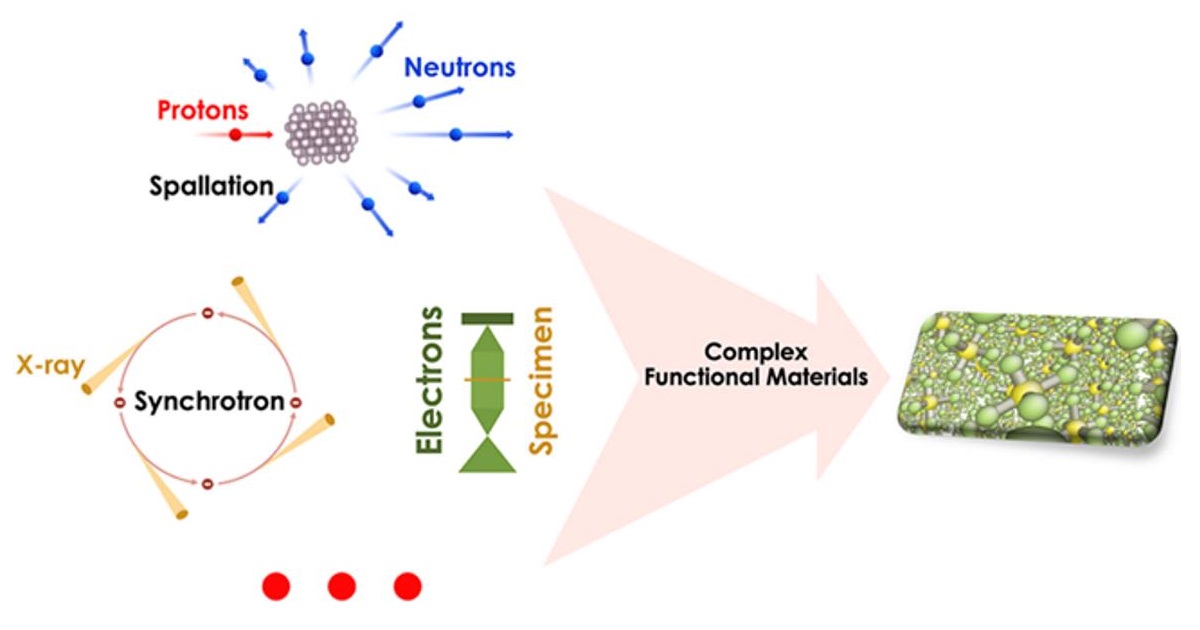Local Structure Characterization for Complex Functional Materials
A special issue of Materials (ISSN 1996-1944). This special issue belongs to the section "Advanced Materials Characterization".
Deadline for manuscript submissions: closed (20 May 2025) | Viewed by 3092

Special Issue Editor
Special Issue Information
Dear Colleagues,
This Special Issue aims to provide a platform for community discussion about the recent progress and futuristic perspective of local structure characterization in complex functional materials. The local perspective of the microscopic structure plays a critical role in determining the properties of a wide range of functional materials, e.g., the polarization behavior in ferroelectric materials, ion transportation behavior in energy story materials, coordination chemistry in catalysis materials, and magnetic anisotropy in low-dimensional magnetic systems, among others. Characterization of the local structure of functional materials thus becomes an imperative task in pursuit of better understanding the structure–property link, aiming to provide reliable guidance principles for designing better-performing functional materials. As the exploration space further extends to complex function materials, there emerges an increasing demand for comprehensive characterization of the local structure. Such a comprehensive effort is expected to involve the application of combined experimental characterization, theoretical calculation, and potentially up-to-date machine learning techniques to yield a unique and complete picture of the underlying local structure of complex functional materials.
Dr. Yuanpeng Zhang
Guest Editor
Manuscript Submission Information
Manuscripts should be submitted online at www.mdpi.com by registering and logging in to this website. Once you are registered, click here to go to the submission form. Manuscripts can be submitted until the deadline. All submissions that pass pre-check are peer-reviewed. Accepted papers will be published continuously in the journal (as soon as accepted) and will be listed together on the special issue website. Research articles, review articles as well as short communications are invited. For planned papers, a title and short abstract (about 250 words) can be sent to the Editorial Office for assessment.
Submitted manuscripts should not have been published previously, nor be under consideration for publication elsewhere (except conference proceedings papers). All manuscripts are thoroughly refereed through a single-blind peer-review process. A guide for authors and other relevant information for submission of manuscripts is available on the Instructions for Authors page. Materials is an international peer-reviewed open access semimonthly journal published by MDPI.
Please visit the Instructions for Authors page before submitting a manuscript. The Article Processing Charge (APC) for publication in this open access journal is 2600 CHF (Swiss Francs). Submitted papers should be well formatted and use good English. Authors may use MDPI's English editing service prior to publication or during author revisions.
Keywords
- local structure
- complex functional materials
- total scattering
- comprehensive modeling
- structure-property link
Benefits of Publishing in a Special Issue
- Ease of navigation: Grouping papers by topic helps scholars navigate broad scope journals more efficiently.
- Greater discoverability: Special Issues support the reach and impact of scientific research. Articles in Special Issues are more discoverable and cited more frequently.
- Expansion of research network: Special Issues facilitate connections among authors, fostering scientific collaborations.
- External promotion: Articles in Special Issues are often promoted through the journal's social media, increasing their visibility.
- Reprint: MDPI Books provides the opportunity to republish successful Special Issues in book format, both online and in print.
Further information on MDPI's Special Issue policies can be found here.






